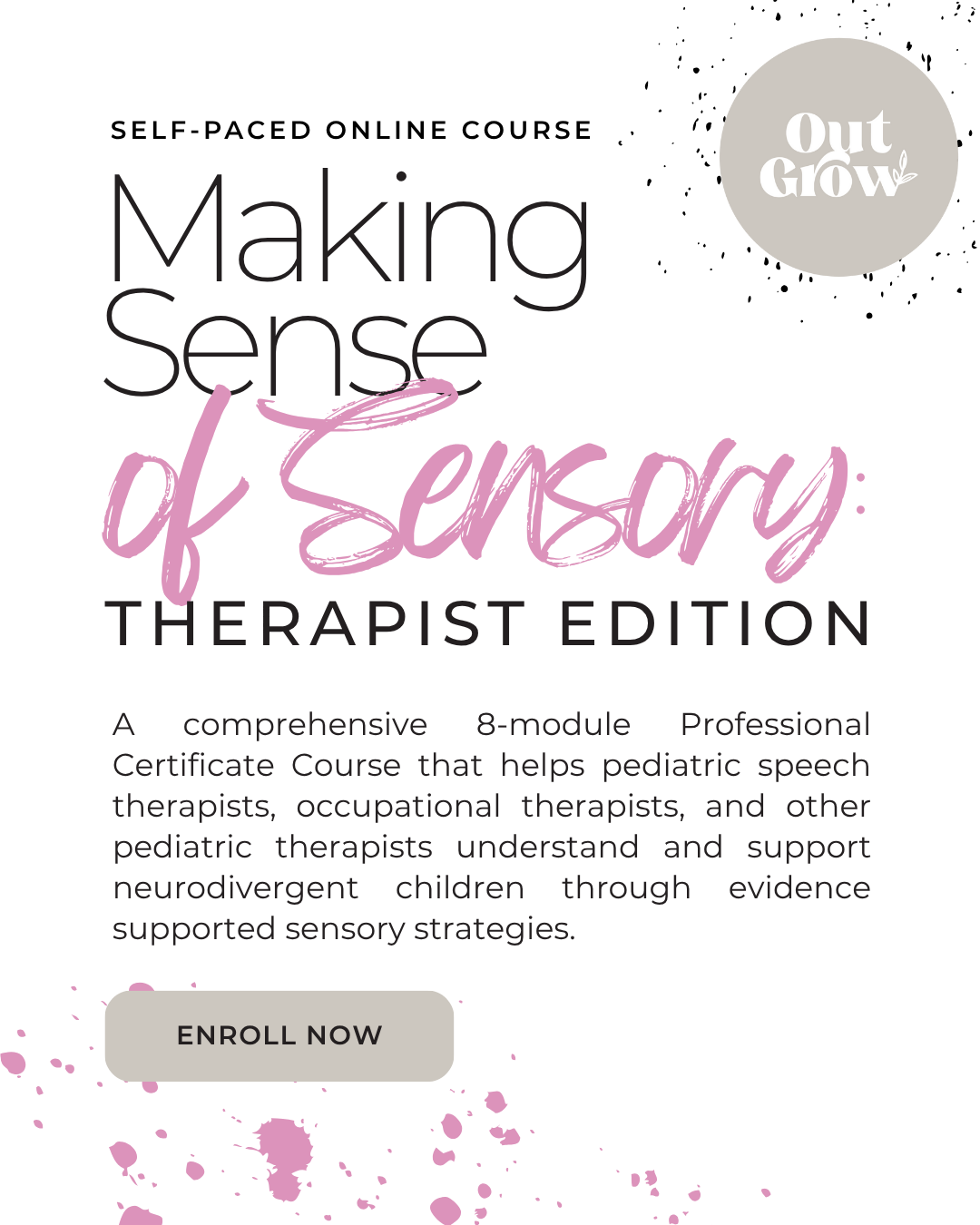Four Steps to Support Child Regulation
As pediatric therapists, we’ve all seen how dysregulation can look completely different from one child to the next. One kid is bouncing off furniture; another is melting down over a small change; another seems to “check out” mid-session. Before we reach for strategies or visuals, it helps to slow down and ask why their body is reacting that way.
At OutGrow Therapeutics, we use a simple four-step process to uncover each child’s sensory regulation needs and build supports that actually work, in real therapy sessions, classrooms, and homes.
Step 1: Observe them in their natural play
Before you intervene, watch. Observation is the most powerful tool we have for understanding sensory regulation. Notice what the child’s body naturally seeks when the environment is relaxed and unstructured:
Do they spin, crash, or constantly move?
Do they prefer tight spaces, deep pressure, or quiet, repetitive play?
Are they humming, tapping, or covering their ears?
This tells you what their nervous system craves or avoids. How a child plays when they’re in control reveals the sensory input that helps them stay organized…and what can easily push them toward overload.
Step 2: Categorize that play into sensory systems
Once you see the patterns, connect them to the sensory systems involved. This helps you move from “he’s all over the place” to “he’s seeking proprioceptive and vestibular input.”
So how do we categorize behaviors? A few examples are listed below:
Jumping, crashing, pushing, heavy work = Proprioceptive (body awareness)
Exploring textures, avoiding messy play, constant fidgeting = Tactile (touch)
Recognizing which sensory systems are driving behavior gives you direction for how to support regulation rather than react to it.
Step 3: Develop a sensory toolbox
Once you know what systems are most active, it’s time to build a sensory toolbox that matches the child’s needs. This doesn’t have to be fancy or expensive, just practical, repeatable activities that fit your space and goals.
What this looks like:
Proprioceptive Behaviors: offer resistance bands, wall pushes, carrying weighted items
Tactile: offer sensory bins, scrub brush, vibrating hand toys
When you intentionally build this toolbox, you create consistent opportunities for sensory input that helps a child’s body find balance throughout the day.
Take our FREE quiz! Find out what a child’s behavior is telling you in under two minutes.
Step 4: Use those tools proactively and reactively
Ideally, we want to use these supports regularly, not just after dysregulation occurs. Offer them proactively (before transitions or challenging tasks) and reactively (when signs of dysregulation appear, like zoning out, big reactions, or fast movements). In those moments, pause and guide the child toward one of their sensory tools.
Over time, these moments become powerful co-regulation opportunities. The child begins to notice what helps them feel calm and focused, and you’re modeling how to listen to the body’s cues instead of fighting them.
Start with observation. Stay curious. Build tools that make sense for this child.
Why We Built This Course for Therapists
This is the heart behind Making Sense of Sensory™: Therapist Edition. We created it for pediatric therapists of every discipline including OTs, SLPs, PTs, BCBAs, RBTs, and counselors because all of us work with neurodivergent children whose sensory processing differences directly impact their ability to engage and learn.
The course breaks down each sensory system, shows you how to spot seeking versus avoiding behaviors, and gives you strategies that match the child’s specific needs. It is not about adding more random sensory play into your sessions. It is about knowing why one approach works while another does not.
Because when we understand all eight sensory systems, we stop guessing. We stop just managing behavior. And we start helping kids truly thrive.
Ready to take the next step? Join the waitlist for Making Sense of Sensory™, coming soon! Your clients, and your sessions, will thank you.
Hope to see you inside! Email admin@outgrowtherapeutics.com for questions or group/clinic discounts.
🌿 OutGrow Therapeutics: helping kids (and their therapists) OutGrow What They Know.



